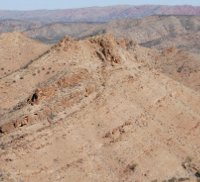
Several lines of evidence suggest that Earth surface oxygen levels increased ~2300 years ago. While oxygen concentrations through the remainder of the Proterozoic (2500-542 million years ago) are poorly constrained, recent studies have linked an increase in the abundance of redox-sensitive elements and the difference between sulfur isotope ratios measured in sedimentary sulfate and contemporaneously deposited pyrite to a second oxy genation event ~580 million years ago—coincident with the diversification of macroscopic metazoa. Sulfur isotope data from the early Neoproterozoic Bitter Springs Formation, Australia suggests an increase in microbial sulfide production in anoxic marine bottom waters and sediments may have enhanced nutrient recycling, thus sustaining elevated organic carbon burial rates and early Neoproterozoic oxidation. These findings are consistent with evidence of eukaryotic diversification at this time and suggest that oxidation of the atmosphere-ocean system occurred earlier in the Neoproterozoic than previously appreciated. These results highlight the role that sulfur plays in regulating the exogenic cycles of carbon and oxygen, particularly in low sulfate oceans of Earth’s past.
 Getting Under Europa’s Skin
Getting Under Europa’s Skin Tracing Formation and Evolution of Outer Solar System Bodies Through Stable Isotopes and Noble Gas Abundances
Tracing Formation and Evolution of Outer Solar System Bodies Through Stable Isotopes and Noble Gas Abundances Photosynthesis, a Planetary Revolution
Photosynthesis, a Planetary Revolution Xenon: King of the Gases
Xenon: King of the Gases